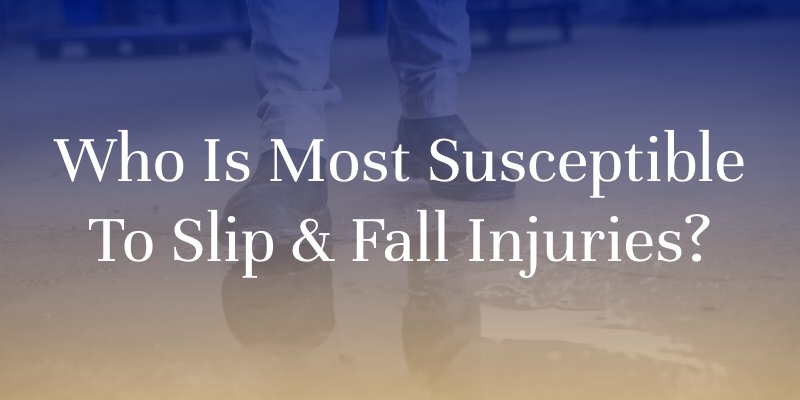
Who Is Most Susceptible to Slip & Fall Injuries?
Colburn Law
Posted in Personal Injury on August 5, 2023
Slip and fall accidents can happen to anyone, at any time, and in various settings. Yet, while these incidents are pervasive, certain demographics are more prone to the risks and serious damage associated with these incidents. In particular, young children and elderly adults are especially susceptible to slip and fall injuries.
Children and Elderly People Can Suffer Serious Slip and Fall Injuries
Data from the Centers for Disease Control and Prevention (CDC) shows that 3 million older people are hospitalized because of a fall injury every year Additionally, more than 2.2 million children ages 14 and under are treated at hospital emergency rooms for fall-related injuries every year. More than half of these injuries occur among children aged four and under.
Compared to their older counterparts, young children often find themselves at a higher risk of slipping, tripping, or falling. Their developing motor skills, combined with their natural curiosity, can make them more susceptible to accidents. Moreover, the injuries they sustain can be severe because their bones are still growing and are more fragile compared to adults.
On the other end of the spectrum, elderly people face a unique set of challenges. Age-related factors such as diminished vision, reduced balance, and weakened bones mean that a simple trip can lead to serious, sometimes life-threatening injuries. Hip fractures, in particular, are a common consequence of falls in older adults and can significantly affect their quality of life.
How to Prevent Slip and Fall Injuries at Home
If you are at risk for a slip and fall accident, there are ways to prevent these incidents and make your home environment safer. Here are a few actionable steps that you can take to reduce the chances of a slip and fall:
- Clear Clutter: Items left on the floor can be tripping hazards. Regularly check hallways, stairs, and walkways to ensure they are free from obstacles.
- Install Handrails: Handrails provide additional support in key places, like stairs and slippery surfaces. Invest in quality handrails for your bathroom, the entrances and exits to your home, and other areas as needed.
- Improve Lighting: Ensure that all areas of your home, particularly stairs, are well-lit and easy to navigate. Consider adding motion-sensor lights in frequently used areas.
- Use Non-Slip Mats: In areas prone to wetness, like the bathroom and kitchen, use non-slip mats or rugs to prevent slip and fall accidents.
- Fix Uneven Surfaces: If you notice any broken tiles, torn carpeting, or uneven flooring, repair them immediately to avoid accidents.
- Clean Spills Promptly: Wet or oily surfaces are a common cause of slips. Address spills immediately to reduce the risk of a slip and fall.
What to Do If You Slip and Fall on Someone Else’s Property
While you can take steps to make your home safer and prevent potential falls, not every property owner upholds this duty of care. Some owners neglect spills, fail to repair broken or uneven surfaces, and forget to warn visitors about hazards on their property. These actions can greatly increase the risk of an accident.
If you slip, fall, and hurt yourself on someone else’s property, you may qualify for legal action. In Washington, you could file a personal injury lawsuit or insurance claim against the owner. In these situations, it is important to speak with a premises liability lawyer as soon as possible. Schedule a free legal consultation after your accident and take your first steps toward justice.




